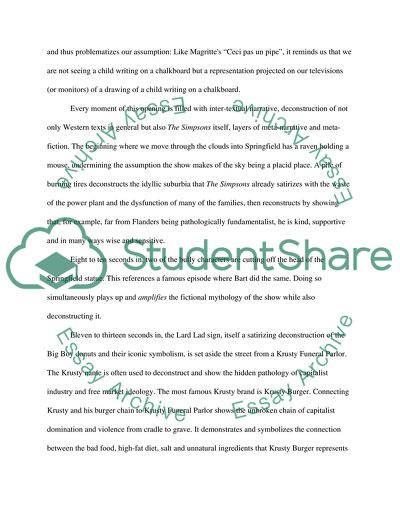Cite this document
(“The Impact of Postmodernism and Live Art on the Simpsons Essay”, n.d.)
The Impact of Postmodernism and Live Art on the Simpsons Essay. Retrieved from https://studentshare.org/visual-arts-film-studies/1574895-the-impact-of-postmodernism-and-live-art-on-the-simpsons
The Impact of Postmodernism and Live Art on the Simpsons Essay. Retrieved from https://studentshare.org/visual-arts-film-studies/1574895-the-impact-of-postmodernism-and-live-art-on-the-simpsons
(The Impact of Postmodernism and Live Art on the Simpsons Essay)
The Impact of Postmodernism and Live Art on the Simpsons Essay. https://studentshare.org/visual-arts-film-studies/1574895-the-impact-of-postmodernism-and-live-art-on-the-simpsons.
The Impact of Postmodernism and Live Art on the Simpsons Essay. https://studentshare.org/visual-arts-film-studies/1574895-the-impact-of-postmodernism-and-live-art-on-the-simpsons.
“The Impact of Postmodernism and Live Art on the Simpsons Essay”, n.d. https://studentshare.org/visual-arts-film-studies/1574895-the-impact-of-postmodernism-and-live-art-on-the-simpsons.


